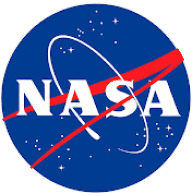Tempêtes solaires - Une mystérieuse menace | ARTE
ARTE・3 minutes read
The sun's crucial role in sustaining life on Earth is threatened by solar storms, prompting NASA's Parker Solar Probe to study these phenomena up close. Solar storms can cause widespread electrical outages and disruptions to technology, highlighting the importance of understanding and monitoring solar activity for Earth's safety and well-being.
Insights
- Solar storms, violent plasma eruptions from the sun, can disrupt GPS satellites, leading to navigation errors and air traffic safety concerns.
- The Parker Solar Probe, launched by NASA, aims to study solar storms up close, revealing unexpected phenomena in the solar wind and enhancing our understanding of the Sun's magnetic field.
Get key ideas from YouTube videos. It’s free
Recent questions
What is the Parker Solar Probe?
A spacecraft studying solar storms up close.
How do solar storms affect Earth?
Solar storms can cause electrical outages.
What are the dangers of solar winds?
Solar winds can damage electrical substations.
How do solar storms affect space exploration?
Solar storms can disrupt spacecraft communication.
How do solar storms impact wildlife?
Solar storms can affect monarch butterflies' navigation.
Related videos
Summary
00:00
"Studying Solar Storms with Parker Solar Probe"
- The sun has provided light and heat to Earth for billions of years, crucial for all life growth.
- Solar storms, violent plasma eruptions from the sun, pose a threat to our electrical network.
- Solar storms occur irregularly, with the last significant ones in 2012 and 2017.
- NASA researchers have developed the Parker Solar Probe to study solar storms up close.
- The Parker Solar Probe will approach the sun at a distance of 6 million kilometers, 96% of Earth's distance to the sun.
- Solar storms can cause widespread electrical outages, as seen in South Africa in 2003.
- Geomagnetic measurements help detect solar winds and predict solar storms.
- Solar storms can lead to polar auroras, visible at the poles and sometimes descending towards the equator.
- Understanding the solar corona's heating mechanisms is crucial for researchers.
- The Parker Solar Probe will carry a camera to capture images of the solar corona, requiring resistant lenses due to solar wind impacts.
20:47
Solar Storms Impact Earth: Preparing for Disruption
- Urban heating network in Quebec breaks down at -7 degrees, leaving Montreal's children's hospital without electricity during surgical interventions.
- Energy supplier APG in Austria uses specialized transformers to counter solar wind currents, but widespread use is decades away due to high costs.
- Solar winds are geographically widespread phenomena that can damage multiple substations simultaneously, leading to power outages or general outages.
- Emergency measures and staff training are in place at the children's hospital in Montreal to handle potential solar storms without being caught off guard.
- German specialists developed an application providing access to NASA's solar observations to prepare for space weather's impact on Earth.
- Solar storms are unpredictable and can disrupt GPS satellites, affecting navigation systems and air traffic safety.
- Airlines are incorporating space weather data to determine safe flight conditions, preventing navigation errors during solar storms.
- Monarch butterflies use Earth's magnetic field for navigation, with their migration patterns linked to solar activity.
- NASA's Parker Solar Probe aims to study solar storms, with a modified trajectory avoiding Jupiter to increase data collection around the Sun.
- European Space Agency's Solar Orbiter probe, designed to study solar storms, features a unique flight path to observe the Sun's poles and resist its heat.
43:18
"Parker Solar Probe: Space Exploration Triumph"
- Delta IV launches NASA's Parker Solar Probe on August 12, 2018, marking a significant achievement in space exploration.
- The Parker probe must operate autonomously when close to the Sun, relying on beacon tones for communication.
- Solar time, crucial for bodily functions, is indicated by the solar dial, influencing our internal clock and natural rhythms.
- The Parker Solar Probe's mission has already revealed unexpected phenomena in the solar wind, providing valuable insights into solar storms and the Sun's magnetic field.




